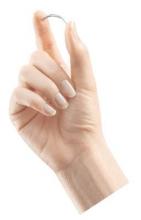FROM AN FDA ADVISORY COMMITTEE MEETING
Essure permanent contraceptive coils should probably be removed if they’re not positioned correctly and a woman is in pain or gets pregnant, or if a woman develops autoimmune or hypersensitivity symptoms after the device is placed, members of the Food and Drug Administration’s Obstetrics and Gynecology Devices Panel concluded Sept. 24.
The panel met in Silver Spring, Md., to consider the device’s future in the wake of more than 5,000 complaints from patients about pain and other serious problems following implantation of Bayer’s fallopian tube permanent sterilization coil.
The 19-member advisory panel didn’t vote on any formal recommendations to the FDA, but reached a general consensus following a series of deliberations.
After dozens of Essure patients testified about apparent immune reactions after implantation, panel members seemed particularly concerned with the possibility that nickel, or some other element in Essure, can cause type IV hypersensitivity reactions, which many witnesses said were at least partly contributing to their problems.
The panel members also expressed concern with the difficulty women had finding help when they developed chronic pain and other “life-altering side effects that stop you from functioning like a person,” as Angie Firmalino, an administrator of the 21,508-member Facebook group Essure Problems, testified.
Many of those patients said implantation was the “worst mistake” of their lives, and called to have the device removed from the market. But their input was tempered by reviews from both the FDA and Essure-manufacturer Bayer, which concluded that most women do well with Essure.
The American College of Obstetricians and Gynecologists, Physicians for Reproductive Health, and Planned Parenthood Federation of America issued a joint statement noting that Essure is the only permanent contraception that can be performed non-surgically and is an important option for some women.
"We are grateful to the Food and Drug Administration for hosting an important conversation about the safety of Essure and on the steps that the agency and the industry can take in order to ensure that Essure is used safely in the future. But we urge the FDA to recognize that restricting women's access to certain methods of birth control will limit their choices and, in some cases, expose them to additional risk," the groups wrote.
One of the main themes of the panel's deliberations was the lack of solid information about the risks and benefits of Essure. The device was approved by the FDA in 2002 without a randomized controlled trial under the agency’s “premarket approval” process.
In addition to possible removal scenarios, some panel members suggested that histories of hypersensitivity, autoimmune reactions, pelvic pain, or pelvic surgery should be contraindications to Essure. One panel member said that the only proper patient for the device is a woman who can’t undergo traditional tubal ligation or receive long-acting reversible contraception.
But such recommendations were all tentative, given the lack of data.
To fill in the gaps, panel members called for the establishment of a prospective patient registry for Essure, similar to the isotretinoin and vaginal mesh registries. Most thought that the other option – a new randomized, controlled trial – would have to be too large to capture what are probably rare adverse events, and take too long for a product that’s already on the market.
A registry is needed "so we can have an accurate assessment of what's going on," said panelist Dr. David B. Seifer, from the Oregon Health & Science University in Portland.
The purpose of an Essure registry would be primarily to get an idea of how well the device works to prevent pregnancy. Real-world data seemed to be somewhat at odds with the nearly 100% efficacy reported in Bayer’s studies.
Beyond that, the aim of launching the registry would be to track and analyze outcomes in order to get a sense of which women do well with the device, and who should be steered to other options.
The registry would capture the true incidence of chronic pelvic pain, device migration, allergic or autoimmune issues, and other problems. It could also track removal of the device. Overall, panelists agreed that there needs to be a standard protocol on how to remove the device.
Several panelists wanted the registry to capture pathology reports on removed devices, as well, to see what kind of adverse response Essure triggered in the body.
Education on Essure also needs to improve, panelists concluded, for both patients and physicians. Several panel members said that the current device labeling was inadequate. At least one panel member said that until more is known about what problems are actually related to the device, labeling should include a summary of the more than 100 types of adverse events reported to the FDA.


